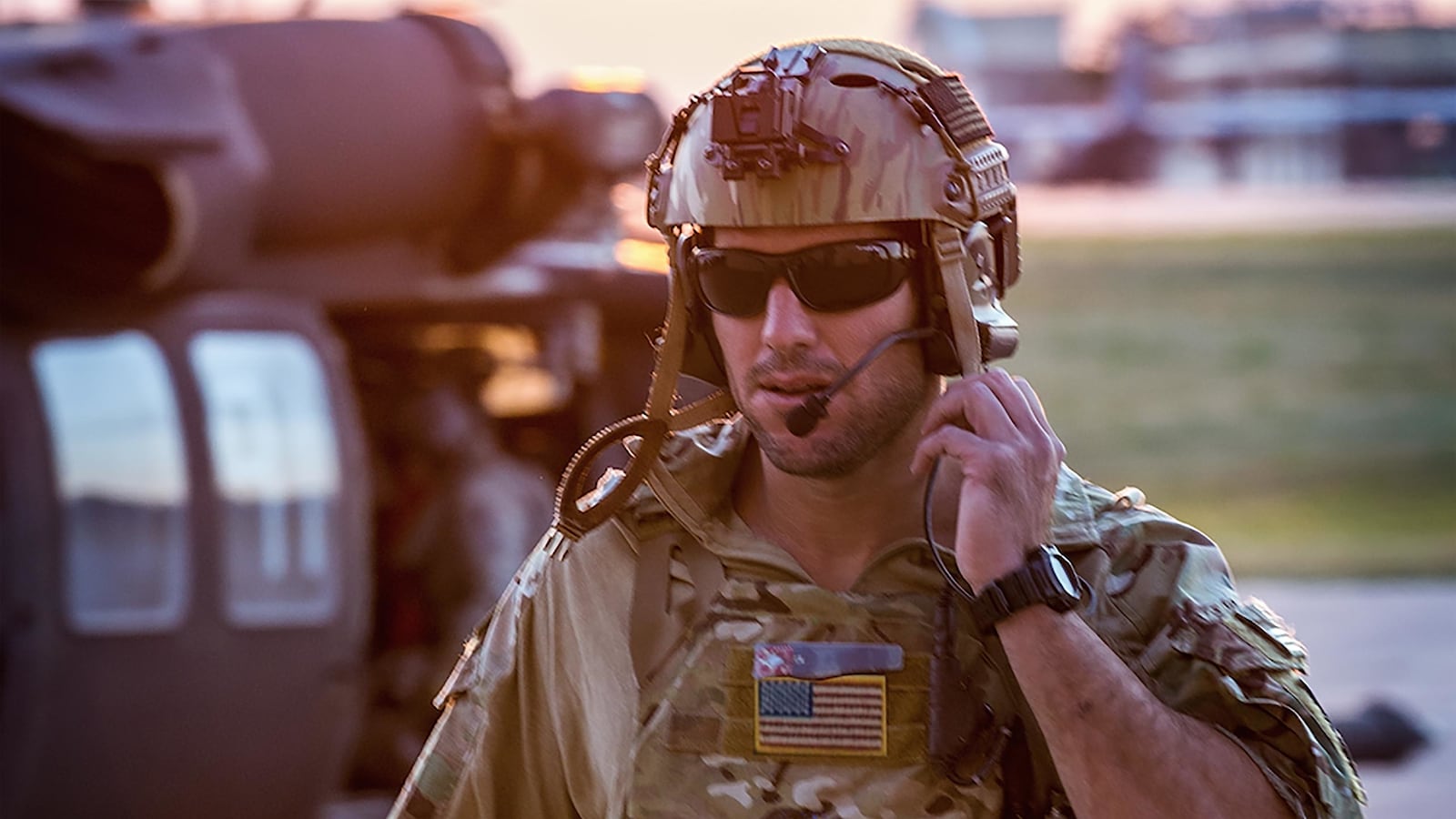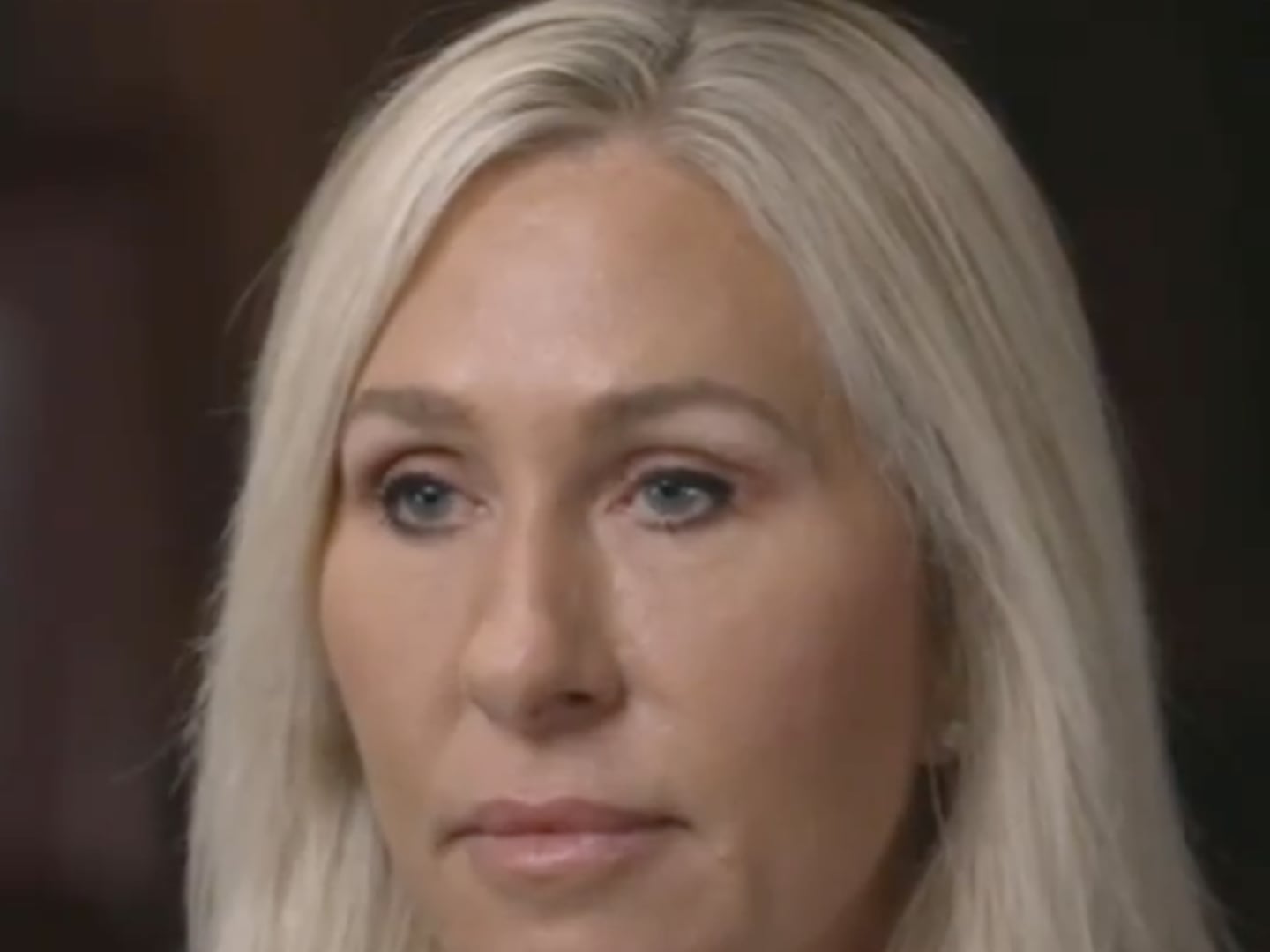POMPANO BEACH, Florida—John Owens was in the back of a C-17 transport aircraft surrounded by members of the Naval Special Warfare Development Group, known to the public as SEAL Team Six. John’s younger brother, Ryan, was there too, laying in a casket draped in stars and stripes.
The flight from Germany to Dover Air Force base in Delaware was a long one for John, who wished it was him in that box instead of Ryan, who was killed in action during a mission in Yemen.
Five days earlier on Sunday, Jan. 29., a high-ranking U.S. Navy SEAL in full-dress uniform came knocking on the front door of John’s home in Pompano Beach, Florida. John’s wife, Holly, answered the door because John had deployed to Iraq a few days earlier for the U.S. government. Holly had to wait hours before she would be able to connect with her husband over FaceTime to tell him his brother was dead.
On Saturday, in Deerfield Beach, Florida, John organized the inaugural Ryan Owens Memorial Run to keep the legacy of his brother alive. This is the first time John has spoken publicly about the loss of his brother in Yemen, his journey to bring Ryan home, and how Ryan came to be posthumously awarded the Silver Star during a ferocious battle in Somalia—the details of which are reported here for the first time.
“Really the only stories out there are the ‘Ryan Owen first death under Trump failed mission’ stories, which it wasn’t a failed mission, but that’s not the total of his life,” John said. “It’s not about one mission, he did 12 deployments, probably over 1,000 missions easily.”

Senior Chief Special Warfare Operator William “Ryan” Owens was the first man or woman to die in combat under President Donald Trump. The president seemed to shift blame for the mission he authorized when he told Fox and Friends, “the generals... lost Ryan.” Trump honored Ryan and his wife at the State of the Union, saying, “Ryan died as he lived: a warrior, and a hero—battling against terrorism and securing our nation.”
Ryan’s father William, a Navy veteran and former Army Green Beret, declined to meet the president when Ryan’s casket landed at Dover Air Force base, and later called into question the Yemen operation.
Owens was part of SEAL Team Six’s Gold Squadron who were sent into Yemen along with special forces from the United Arab Emirates on a mission to kill or capture high value al Qaeda in the Arabian Peninsula targets and collect intelligence on the terrorist organization.
The raid had been planned under the Obama administration, but it was not signed off on until Trump came into office and was briefed by National Security Advisor Michael Flynn. Trump approved the mission on Jan. 26 and it was executed two days later.
The approach the SEALs took to the target positioned them on the crest of a hill where they could see al Qaeda security patrols providing protection for the regional commanders of AQAP.
At some point, the SEALs were compromised as the al Qaeda operatives spotted the team, their silhouettes outlined and highlighted against the backdrop of ambient light, John said. A furious firefight broke out and three of Ryan’s teammates were wounded.
Ryan had went to help one of his fellow wounded SEAL team members and was bending over when he was shot through his left side where body armor does not cover. The bullet passed laterally through his chest and struck his heart, killing him soon after.
The SEALs called for an airstrike from an armed drone hovering overhead, which killed at least 23 civilians, including a U.S. citizen girl. The Pentagon would initially deny there had been any civilian casualties, but later acknowledge their deaths. The SEALs killed 14 al Qaeda fighters in a nearly hourlong firefight and obtain multiple cell phones, laptops, and documents, according to the Pentagon, which said the information is still being analyzed.
“Ryan and John, nothing bad was ever going to happen to them and you just start to believe it, you really honestly start to believe it,” John’s wife Holly said, choking up.
“If I could trade places with Ryan, I would,” John said.

John and Ryan were both born in Illinois, separated by different mothers and five years.
Bill’s marriage to Ryan’s mother, Patricia, ended after they moved to South Florida. (She died in 2013.) But despite the separate living conditions the distance between brothers did not deteriorate. Ryan would spend summers and holidays with his father and older brothers in South Florida.
“We grew up around my dad being a Green Beret, all my brothers did,” John said. “We would play ‘military’ doing like river crossings and swim in canals and get in trouble with that. We used to go and watch my dad jump out of airplanes at the drop zone, it was a lot of good stuff.”

Ryan played catcher during the school year for the Illinois Valley Central High School baseball team, the Grey Ghosts. A caption in one of his year book’s read, “Ryan Owens saved the game with a great catch.”
Cody Jackson, who previously spoke with The Daily Beast back in February said that in high school, Ryan had his eyes set on become one of the nation’s most elite warriors.
As a SEAL, Ryan got to know members of the San Francisco Giants who honored him this year with a plaque in the dugout of each game that traveled on the road. It displays Gold Squadron’s patch and Ryan’s call sign patch: “Golf India One,” indicating Ryan was the team leader of that troop.
“It’s like Ryan is watching over them as they play,” John said. “Those guys have such respect for him... Ryan loved all those guys, Strickland, Buster Posey, Lopez and they loved him,” John said.

By all accounts, Ryan was the stereotypical kid brother, who wanted to follow in big brother’s footsteps. John says that when he was in BUD/S (Basic Underwater Demolition/SEAL) training, Ryan came and visited him five times—a uncommon occurrence for SEAL trainees attempting to navigate the arduous process while trying desperately to block out all mental voices telling them to “ring out” of training.
“He would stay in the barracks, which you’re not supposed to do,” John laughed. “But he was so funny. The instructors noticed him and I would get hazed, but he would come in and he was just so happy and fired up to be there.
“I remember being in third phase and Ryan is like, ‘Dude, you’re in third phase! You made it,’ as he’s walking down the halls at 618 [SEAL qualification training barracks in Coronado, California].
“He was always like, ‘Yeah, bro. You made it, you’re done,’ and I’m just like stop talking,” John said as he pleaded with his brother to stay quiet with proclamations that John is prematurely a Navy SEAL out of fear of reprisal from SEAL instructors who may decided to have John head down to the beautiful beaches of Coronado Island and get “wet and sandy”—a practice of reinforcing the SEAL standard by having trainees dive into the frigid waters of the Pacific Ocean and then get out and cover every inch of their body with beach sand.
John graduated BUD/S in April 2000 and was assigned to SEAL Team Three on the West Coast. Ryan entered the Navy at 18 in August 1998, and enter BUD/S training in 2001, just three months before the 9/11 attacks. Ryan became a SEAL in 2002 and joined SEAL Team Six, the Navy’s elite counterterrorism unit, in 2007.
Ryan’s bravery as a Navy SEAL was not just on display when the bullets started flying. He was a recipient of the Navy and Marine Corps Medal, the Navy’s highest non-combat awarded for heroism.
On Sept. 26, 2012, Ryan was training SEALs for Team Six on a live firing range on Virginia Beach when he spotted a woman drowning.
“He’s shooting, has all his gear on, he looks out at the ocean because the dude always had his head on a swivel, always aware of what was going on around him, so he looks out and sees a girl struggling in the ocean... she’s drowning,” John said.
That’s when Ryan dove in.
“Without hesitation and at great risk to his life, he initiated a hasty rescue attempt without fins or a flotation device and dressed in his battle dress uniform,” the award citation states.
The woman was more than a half mile away from shore.
“He gets out there and says to her, ‘Hey, are you alright?’ and this girl basically wanted to die, she was trying to commit suicide and drown herself, and Ryan was like, ‘John, there was no way I was going to swim all the way out there and just let this girl kill herself.’”
John says Ryan grabbed the girl and calmed her down enough to physically swim her back to the shore, despite “her periodic resistance to lifesaving aid,” according to his award citation.
After over an hour of swimming the woman through a choppy sea and against visible rip currents, Ryan brought the woman to shore and put her in the care of medical personnel, but Ryan took a pounding in the rough ocean.
“By the time he got back and dragged her to shore, he was on all fours, it took it out of him, he was smoked, but he did what he had to do to save her,” John said. Ryan’s teammates would start singing “I need a hero” from the Bonnie Tyler song everytime he walked in the room after that day.
The Navy and Marine Corps Medal is the equivalent of the Bronze Star Medal, the nation’s fourth highest award. Ryan already had three of those, two for valor in combat.
“He didn’t want the medal.”
Ryan couldn’t have known it then but he was going to get another medal.
After Ryan died in January, he was awarded the Silver Star for valor in an undisclosed 2015 mission in Somalia and promoted to his current rank.
CNN first reported the news of Ryan’s Silver Star award; however, The Daily Beast has learned of new details about Ryan’s courage under fire that provides a glimpse into his time in Africa, including a previously undisclosed 12-day joint operation between the SEALs and Green Berets that supports Ryan’s Silver Star award citation.
Ryan’s SEAL team along with a Green Beret detachment was on a 12-day operation around July 9, 2015 to July 21, 2015 in war-torn Somalia.
Throughout several intense days of fighting, Ryan’s mobile special operations team encountered 400 enemy fighters that constantly ambushed and attacked Ryan’s convoy with small arms, machine guns, and improvised explosive devices.
John says when Ryan came home that year for Christmas, they walked outside, away from other family members. Ryan described the chaotic multiple day engagement with the enemy as “totally badass” and “the most amazing shit.” A helicopter had to drop additional .50 caliber ammunition to Ryan and his team during the fight because their mounted heavy weapons were running low on bullets. The waves of enemies attacking the SEALs and Green Berets called for multiple aircrafts to support the teams on the ground over a period of three days at one point.
“They had intelligence, surveillance, and reconnaissance assets over them the entire time, and just provided Ryan with a constant feed so he could make all the calls—he made all the right calls. The guy was smart, funny and capable.”
“There’s a letter a Green Beret captain wrote my dad, and said Ryan saved everybody's life, there’s no doubt about it. He said if it wasn’t for Ryan’s decision making, people would be dead,” John said.
The letter was written in March 2016 and sent to John and Ryan’s dad, Bill, was from the commander that served alongside Ryan.

“I’m writing to you today to tell you about your son... as I’m sure you are aware, Ryan is an incredibly talented, unique operator whose accomplishments know no bounds... I can honestly say that Ryan’s abilities to lead without ego and elicit the best from those around him, officers and non-commissioned officers’ alike, is truly one of a kind.
“I can say without hesitation that Ryan’s valor and composure under fire saved the lives of my men and me over a 12 day operation,” the Green Beret wrote.
Ryan’s Silver Star citation says that he “repeatedly exposed himself to enemy fire to personally engage and neutralize enemy fighters, issue order to his team and direct the tactical actions of the partner force,” which ultimately achieved victory over a superior enemy, which included the “destruction of three enemy technical vehicles and associated heavy weapons, establishment of two combat outposts in the region, and securing a town that had previously been in enemy hands for 10 years.”
After Ryan was killed in Yemen, it took John about two days before he could get to an airport in Iraq and fly to Germany. Once he landed, a Naval Special Warfare representative drove John to a U.S. Air Force Base in Frankfurt where he met up with Ryan’s SEAL teammates and learned what happened in Yemen.
“They were so accommodating and so humble and I will never be able to say enough good thing about those guys. There’s a reason Ryan loved them, those men are family,” John said. “I mean, they just came off the battlefield and they don’t know me... their service knows no bounds, they just keep giving.”

John would be taken over to Landstuhl Regional Medical Center in Germany, some three miles south from Ramstein U.S. Air Force base, where Ryan’s “angel flight” would have departed.
“It’s extremely rare that I was allowed to bring my brother home, there was a lot of moving parts everyone bent over backwards, it came from a place of love,” John said.
The loss of Ryan was so heavy on members of Gold Squadron that one teammate quit, John said. “He just said, I’m not doing this shit anymore,” John said.
Al-Rimi, one of DEVGRU’s targets remains alive in Yemen and later released an audio recording after the attack mocking Trump. The military has not determined whether al-Rimi was present in the village during the January raid.
After John finished speaking with Ryan’s team, he said most of them got back onto a plane, heading for Yemen to “get the motherfuckers.”
On Saturday, just before the sold-out crowd of 500 runners would start their four-mile journey to honor the SEAL most had never met, John and Ryan’s dad, Bill, told The Daily Beast, “It’s a great day for a beach run, I just wish Ryan were here.”






